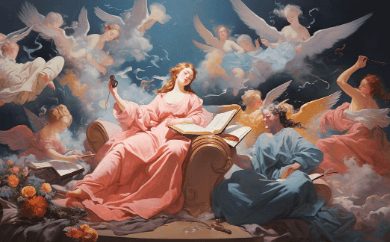The Aesthetics of Art: Understanding What We See

The The Aesthetics of Art: Understanding What We See serves as a crucial framework for examining the interplay between beauty, perception, and cultural context. It compels us to consider how elements such as color and composition impact our emotional responses and interpretations. As we navigate the philosophical dimensions that underpin aesthetic appreciation, we begin to uncover the layers of meaning embedded within various artworks. This exploration raises questions about the role of personal experience and societal values in shaping our understanding of art, prompting a closer examination of how these factors influence our perceptions and interpretations.
The Concept of The Aesthetics of Art: Understanding What We See
Aesthetics, the philosophical study of beauty and taste, serves as a foundational pillar in the realm of art, guiding both the creation and interpretation of artistic works.
It delves into the philosophical foundations that underpin aesthetic experiences, revealing how they shape our understanding of art.
Read More Clip Art:5ccbmmhpujo= Nurse Practitioner
Factors Influencing Perception
Artistic perception is profoundly shaped by a multitude of factors that intertwine individual experiences, cultural contexts, and psychological predispositions.
Color psychology plays a pivotal role, as hues evoke distinct emotions and associations, significantly influencing viewer interpretation.
Moreover, visual harmony, achieved through balanced composition, enhances aesthetic appeal, guiding perception towards a unified experience.
These elements collectively shape how art is understood and appreciated.

Artistic Techniques and Emotions
Various artistic techniques serve not only as tools for expression but also as conduits for emotional resonance.
Color symbolism evokes specific feelings, shaping viewer perception, while expressive brushwork conveys the artist’s inner turmoil or joy.
Together, these methods enhance the artwork’s emotional depth, inviting the audience to engage with their own sentiments, fostering a profound connection between creator and observer.
Cultural Context in Art Appreciation
Understanding the cultural context in which a piece of art is created is essential for a comprehensive appreciation of its significance and meaning.
Art embodies cultural symbolism, reflecting societal values and beliefs shaped by historical influences.
Read More Clip Art:5aefl8ofrni= Award
Conclusion
In the end, the quest for beauty in art reveals a paradox; the more one seeks to understand The Aesthetics of Art: Understanding What We See, the more elusive it becomes. Art, often hailed as a reflection of cultural values, simultaneously defies rigid interpretation, inviting an array of subjective experiences. This intricate dance between perception and technique ultimately underscores the complexity of artistic expression. Thus, the appreciation of art transcends mere observation, evolving into a multifaceted dialogue that challenges both intellect and emotion.



